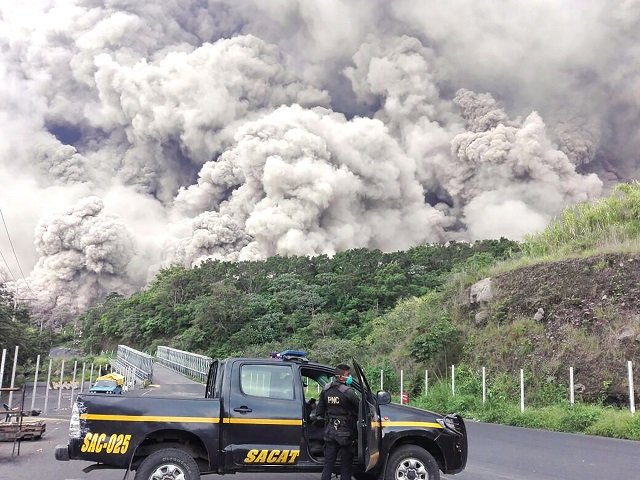
Of them, 17 have been identified so far, said Fanuel Garcia, head of the National Institute of Forensic Sciences.
In addition, there are 46 people injured, most of them seriously, more than 1.7 million being hit by the disaster, including 3,271 ordered evacuated and 1,787 in shelters in the departments of Escuintla, Sacatepequez and Chimaltenango since Sunday's eruption.
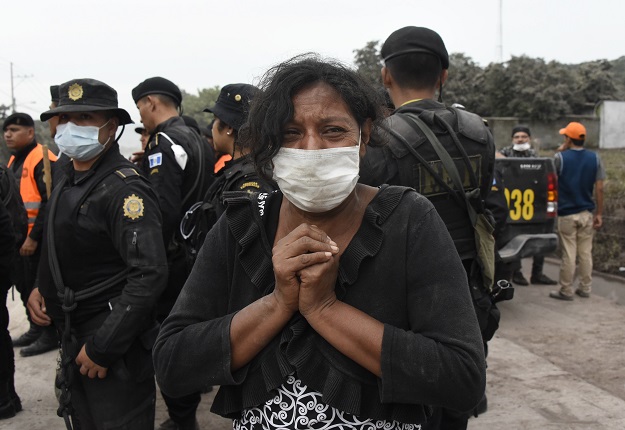 A woman cries for her missing relatives during the search for vicitms in San Miguel Los Lotes, a village in Escuintla Department, about 35 km southwest of Guatemala City, on June 4, 2018, a day after the eruption of the Fuego Volcano At least 25 people were killed, according to the National Coordinator for Disaster Reduction (Conred), when Guatemala's Fuego volcano erupted Sunday, belching ash and rock and forcing the airport to closePHOTO: AFP
A woman cries for her missing relatives during the search for vicitms in San Miguel Los Lotes, a village in Escuintla Department, about 35 km southwest of Guatemala City, on June 4, 2018, a day after the eruption of the Fuego Volcano At least 25 people were killed, according to the National Coordinator for Disaster Reduction (Conred), when Guatemala's Fuego volcano erupted Sunday, belching ash and rock and forcing the airport to closePHOTO: AFPThe 3,763-meter volcano erupted early Sunday, spewing out towering plumes of ash and a hail of fiery rock fragments with scalding mud.
Authorities had warned the death toll could rise after searches resumed for survivors in communities on the mountain's southern flank.
Guatemala volcano eruption kills 25
After an initial toll of 25 dead, it was revised upwards within hours as bodies were recovered from villages razed by the tumbling mud.
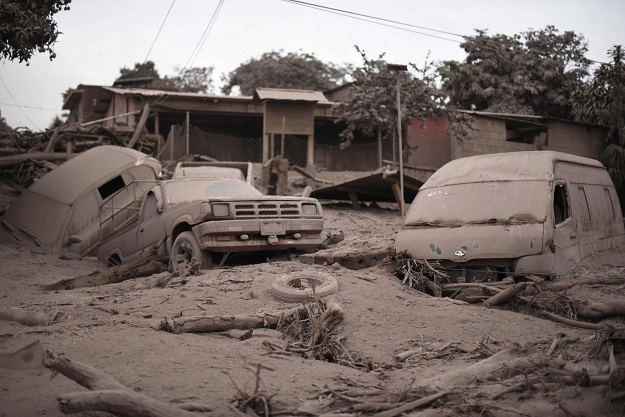 View of the damage casued by the eruption of the Fuego Volcano in San Miguel Los Lotes, a village in Escuintla Department, about 35 km southwest of Guatemala City, on June 4, 2018. At least 25 people were killed, according to the National Coordinator for Disaster Reduction (Conred), when Guatemala's Fuego volcano erupted Sunday, belching ash and rock and forcing the airport to close.PHOTO: AFP
View of the damage casued by the eruption of the Fuego Volcano in San Miguel Los Lotes, a village in Escuintla Department, about 35 km southwest of Guatemala City, on June 4, 2018. At least 25 people were killed, according to the National Coordinator for Disaster Reduction (Conred), when Guatemala's Fuego volcano erupted Sunday, belching ash and rock and forcing the airport to close.PHOTO: AFP"There are missing persons, but we do not know how many," said Sergio Cabanas of Guatemala's disaster management agency. A roll call of communities on the slopes of the volcano was under way.
The speed and ferocity of the eruption took mountain communities by surprise, with many of the dead found in or around their homes.
Cabanas said those who were killed had been overrun by fast-moving burning material discharged by the volcano Sunday. Communities located on its southern slope were the worst hit. Several of the dead were children.
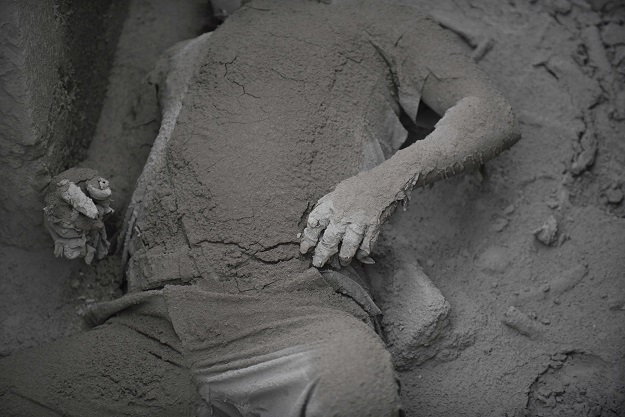 Partial view of a victim of the Fuego Volcano in San Miguel Los Lotes, a village in Escuintla Department, about 35 km southwest of Guatemala City, taken on June 4, 2018, a day after the eruption. At least 25 people were killed, according to the National Coordinator for Disaster Reduction (Conred), when Guatemala's Fuego volcano erupted Sunday, belching ash and rock and forcing the airport to close.PHOTO: AFP
Partial view of a victim of the Fuego Volcano in San Miguel Los Lotes, a village in Escuintla Department, about 35 km southwest of Guatemala City, taken on June 4, 2018, a day after the eruption. At least 25 people were killed, according to the National Coordinator for Disaster Reduction (Conred), when Guatemala's Fuego volcano erupted Sunday, belching ash and rock and forcing the airport to close.PHOTO: AFPAn AFP journalist saw at least three bodies burned in the rubble of the village of San Miguel Los Lotes, where rescue workers, soldiers and police were desperately searching for survivors.
Dead dogs, chickens and ducks also lay among the mud and ash, much of it still smoking.
"I do not want to leave, but go back, and there is nothing I can do to save my family," a weeping Eufemia Garcia, 48, told AFP. She was searching for her three children, her mother, nephews and siblings.
Garcia, from Los Lotes, said she escaped with the help of her husband.
 Police officers look at the Fuego Volcano from San Miguel Los Lotes, a village in Escuintla Department, about 35 km southwest of Guatemala City, on June 4, 2018, a day after an eruption. At least 25 people were killed, according to the National Coordinator for Disaster Reduction (Conred), when Guatemala's Fuego volcano erupted Sunday, belching ash and rock and forcing the airport to closePHOTO: AFP
Police officers look at the Fuego Volcano from San Miguel Los Lotes, a village in Escuintla Department, about 35 km southwest of Guatemala City, on June 4, 2018, a day after an eruption. At least 25 people were killed, according to the National Coordinator for Disaster Reduction (Conred), when Guatemala's Fuego volcano erupted Sunday, belching ash and rock and forcing the airport to closePHOTO: AFPUN Secretary-General Antonio Guterres said he was deeply saddened by the "tragic loss of life and the significant damage caused by the eruption," and said the UN was ready to assist national rescue and relief efforts.
President Jimmy Morales, who has declared three days of national mourning, visited the disaster zone.
"The volcano has erupted before, but never like this," said Gustavo Larius, a 27-year-old bricklayer searching the streets of his village for missing family and friends, a handkerchief pressed over his mouth and nose.
 This handout picture released by the National Police of Guatemala shows an aerial view of the area around Volcano Fuego after an eruption in Guatemala on June 4, 2018. Emergency workers resumed on Monday for Guatemalans missing after the eruption of the Fuego volcano on June 3, which belched out clouds of ash and flows of lava and left at least 25 people dead according to disaster agency spokesman.PHOTO: AFP
This handout picture released by the National Police of Guatemala shows an aerial view of the area around Volcano Fuego after an eruption in Guatemala on June 4, 2018. Emergency workers resumed on Monday for Guatemalans missing after the eruption of the Fuego volcano on June 3, which belched out clouds of ash and flows of lava and left at least 25 people dead according to disaster agency spokesman.PHOTO: AFPThe eruption sent ash billowing over the surrounding area, turning plants and trees gray and blanketing streets, cars and people.
Farmers covered in ash fled for their lives as civil defense workers tried to relocate them to shelters.
"This time we were saved; in another (eruption) no," said Efrain Gonzalez, 52, sitting on the floor of a shelter in the city of Escuintla, where he arrived with his wife and one-year-old daughter.
Homes damaged as residents flee Hawaii volcano eruption
Gonzalez was overwhelmed with despair, as two more of his children, aged 10 and four, are missing. They were trapped in their home, which was flooded with hot mud that descended from the volcano.
Dense ash blasted out by the volcano shut down Guatemala City's international airport, civil aviation officials said.
The eruption ended after 16.5 hours, but "there is a likelihood that it will reactivate" warned the Institute of Volcanology.
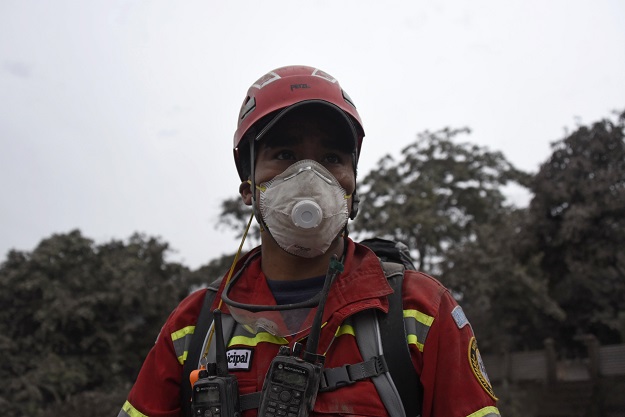 A firefighter is pictured during search operations at the ash-covered village of San Miguel Los Lotes, in Escuintla department, about 35 km southwest of Guatemala City, on June 4, 2018, a day after the eruption of the Fuego Volcano. Rescue workers Monday pulled more bodies from under the dust and rubble left by an explosive eruption of Guatemala's Fuego volcano, bringing the death toll to at least 62.PHOTO: AFP
A firefighter is pictured during search operations at the ash-covered village of San Miguel Los Lotes, in Escuintla department, about 35 km southwest of Guatemala City, on June 4, 2018, a day after the eruption of the Fuego Volcano. Rescue workers Monday pulled more bodies from under the dust and rubble left by an explosive eruption of Guatemala's Fuego volcano, bringing the death toll to at least 62.PHOTO: AFPThe speed of the eruption took locals by surprise, and could be explained by it producing pyroclastic flows, sudden emissions of gas and rock fragments, rather than lava, said volcanologist David Rothery of Britain's Open University.
"A lava flow rarely travels fast enough to engulf people," he said.
"The videos and still images I've seen suggest instead one or more pyroclastic flows. This is when a violently erupted mass of rock fragments and hot gas finds itself too dense to rise as an ash column and instead cascades down the volcano's slopes.
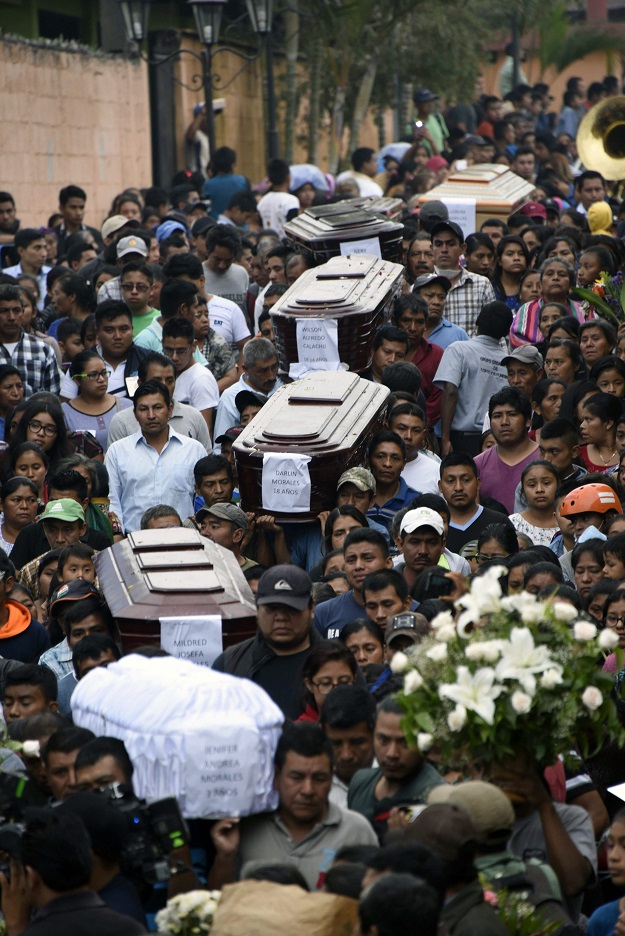 Residents carry the coffins of seven people who died following the eruption of the Fuego volcano, along the streets of Alotenango municipality, Sacatepequez, about 65 km southwest of Guatemala City, on June 4, 2018. Rescue workers Monday pulled more bodies from under the dust and rubble left by an explosive eruption of Guatemala's Fuego volcano, bringing the death toll to at least 62.PHOTO:AFP
Residents carry the coffins of seven people who died following the eruption of the Fuego volcano, along the streets of Alotenango municipality, Sacatepequez, about 65 km southwest of Guatemala City, on June 4, 2018. Rescue workers Monday pulled more bodies from under the dust and rubble left by an explosive eruption of Guatemala's Fuego volcano, bringing the death toll to at least 62.PHOTO:AFP"Pyroclastic flows or surges can move at over 100 kilometers (62 miles) per hour, and may be hot enough to glow like molten lava. They can travel further, as well as much faster, than lava flows," said Rothery.
Fuego has been erupting since 2002, and was continuously active in 2017. There were explosions and ash plumes and a volcanic mudflow last month.











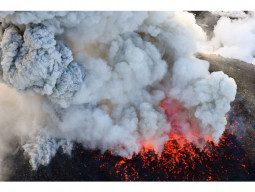
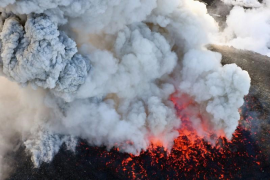
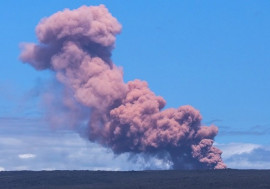
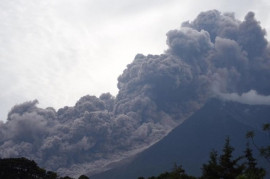

















1714024018-0/ModiLara-(1)1714024018-0-270x192.webp)









COMMENTS
Comments are moderated and generally will be posted if they are on-topic and not abusive.
For more information, please see our Comments FAQ